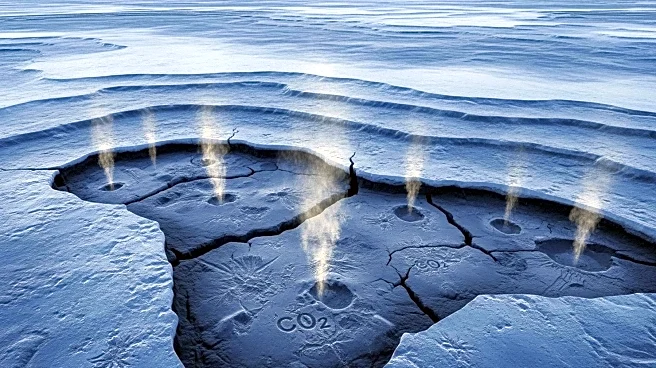What is the story about?
What's Happening?
Researchers have found that ancient microbes preserved in Arctic permafrost can become active and start emitting greenhouse gases if exposed to warmer conditions. The study, published in the Journal of Geophysical Research: Geosciences, suggests that these microbes, dormant for up to 40,000 years, could reactivate with longer Arctic summers. This reactivation could accelerate permafrost thaw and contribute to global warming. The research involved collecting samples from the Permafrost Research Tunnel in Alaska and simulating future climate conditions. The findings indicate that even a slight increase in temperature could lead to significant microbial activity, potentially releasing large amounts of carbon dioxide and methane.
Why It's Important?
The study highlights a potential feedback loop where warming temperatures could lead to increased greenhouse gas emissions from permafrost, further accelerating climate change. This discovery is crucial for understanding the ecological impacts of permafrost thaw and its contribution to global warming. As permafrost contains twice as much carbon as the Earth's atmosphere, the release of these gases could significantly affect climate patterns. The research underscores the need for urgent climate action to mitigate warming and prevent large-scale carbon emissions from ancient microbial activity.
Beyond the Headlines
The implications of this study extend beyond immediate climate concerns, as the reactivation of ancient microbes could alter Arctic ecosystems and biodiversity. The findings also raise ethical questions about human intervention in natural processes and the potential consequences of disturbing ancient microbial communities. Long-term, this research could inform policies on climate change mitigation and adaptation strategies, emphasizing the importance of preserving permafrost regions to prevent further ecological disruption.
AI Generated Content
Do you find this article useful?














